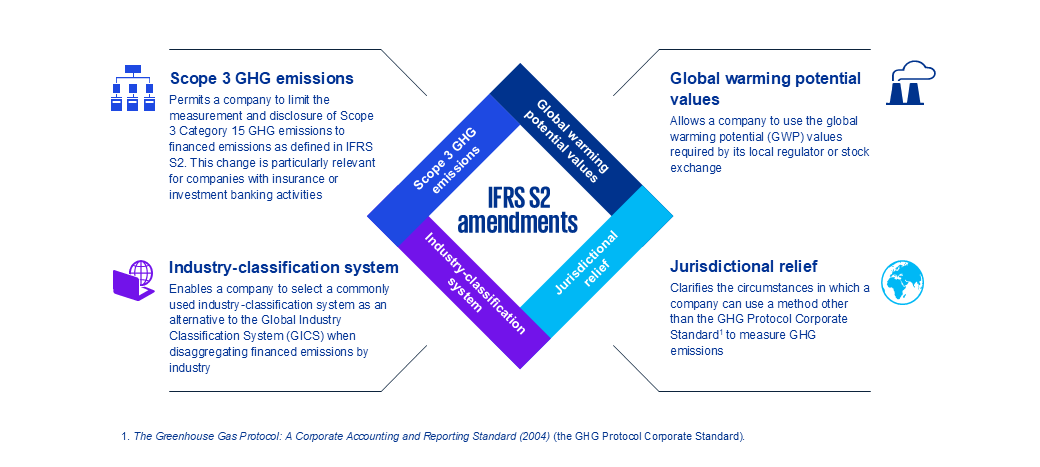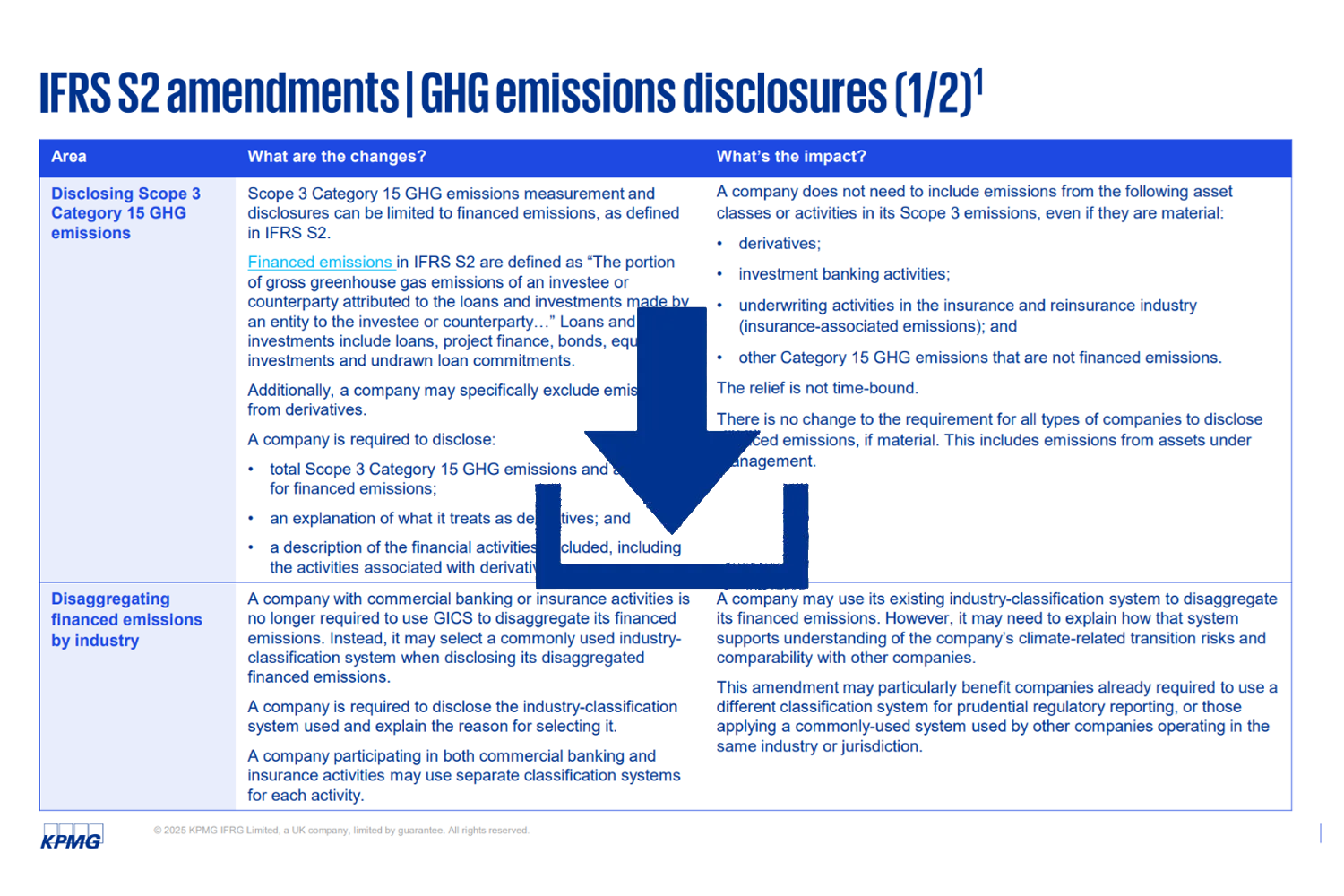(This article was published on 30 January 2025 and updated on 12 December 2025)
Highlights
Targeted amendments to IFRS S2 Climate-related Disclosures will change how some companies measure and disclose their greenhouse gas (GHG) emissions:

When do the changes take effect?
Companies that comply with IFRS® Sustainability Disclosure Standards are required to apply the amended IFRS S2 standard to annual reporting periods beginning on or after 1 January 2027. Early application is permitted to enable companies to adapt their systems ahead of the effective date.
If a jurisdiction requires the amended standard, it may set local requirements for how and when companies apply the amendments.
What transition requirements apply?
In the first year of applying the amended standard, companies that have previously reported under IFRS Sustainability Disclosure Standards will need to adjust prior-period comparative information.
Actions for management
- Understand the amendments to IFRS S2 and how they affect your company.
- If you have already completed your gap assessment, be ready to update it.
- Consider whether you need to change your systems, processes and controls.
- For further information on the amendments, speak to your KPMG contact and visit kpmg.com/ifrs to keep up to date with the latest news and discussion.
© 2025 KPMG IFRG Limited, a UK company, limited by guarantee. All rights reserved.


